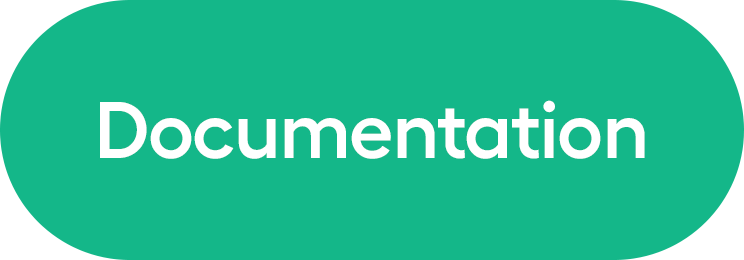base_model: llava-hf/llava-1.5-7b-hf
language:
- en
library_name: transformers
pipeline_tag: image-text-to-text
license: llama2
tags:
- multimodal
- llava
- vision
- unsloth
Finetune Llama 3.2, Qwen 2.5, Gemma 2, Mistral 2-5x faster with 70% less memory via Unsloth!
We have a free Google Colab Tesla T4 notebook for Llava 1.5 (7B) here: https://colab.research.google.com/drive/1Ys44kVvmeZtnICzWz0xgpRnrIOjZAuxp?usp=sharing
And a free notebook for Llama 3.2 Vision (11B) here
unsloth/llava-1.5-7b-hf-bnb-4bit
For more details on the model, please go to the original model card
✨ Finetune for Free
All notebooks are beginner friendly! Add your dataset, click "Run All", and you'll get a 2x faster finetuned model which can be exported to GGUF, vLLM or uploaded to Hugging Face.
| Unsloth supports | Free Notebooks | Performance | Memory use |
|---|---|---|---|
| Llama-3.2 (3B) | ▶️ Start on Colab | 2.4x faster | 58% less |
| Llama-3.2 (11B vision) | ▶️ Start on Colab | 2x faster | 40% less |
| Qwen2 VL (7B) | ▶️ Start on Colab | 1.8x faster | 40% less |
| Qwen2.5 (7B) | ▶️ Start on Colab | 2x faster | 60% less |
| Llama-3.1 (8B) | ▶️ Start on Colab | 2.4x faster | 58% less |
| Phi-3.5 (mini) | ▶️ Start on Colab | 2x faster | 50% less |
| Gemma 2 (9B) | ▶️ Start on Colab | 2.4x faster | 58% less |
| Mistral (7B) | ▶️ Start on Colab | 2.2x faster | 62% less |
| DPO - Zephyr | ▶️ Start on Colab | 1.9x faster | 19% less |
- This conversational notebook is useful for ShareGPT ChatML / Vicuna templates.
- This text completion notebook is for raw text. This DPO notebook replicates Zephyr.
- * Kaggle has 2x T4s, but we use 1. Due to overhead, 1x T4 is 5x faster.
Llava 1.5 Details
Model type: LLaVA is an open-source chatbot trained by fine-tuning LLaMA/Vicuna on GPT-generated multimodal instruction-following data. It is an auto-regressive language model, based on the transformer architecture.
Model date: LLaVA-v1.5-7B was trained in September 2023.
Paper or resources for more information: https://llava-vl.github.io/
How to use the model
First, make sure to have transformers >= 4.35.3.
The model supports multi-image and multi-prompt generation. Meaning that you can pass multiple images in your prompt. Make sure also to follow the correct prompt template (USER: xxx\nASSISTANT:) and add the token <image> to the location where you want to query images:
Using pipeline:
Below we used "llava-hf/llava-1.5-7b-hf" checkpoint.
from transformers import pipeline, AutoProcessor
from PIL import Image
import requests
model_id = "llava-hf/llava-1.5-7b-hf"
pipe = pipeline("image-to-text", model=model_id)
url = "https://huggingface.co/datasets/huggingface/documentation-images/resolve/main/transformers/tasks/ai2d-demo.jpg"
image = Image.open(requests.get(url, stream=True).raw)
# Define a chat history and use `apply_chat_template` to get correctly formatted prompt
# Each value in "content" has to be a list of dicts with types ("text", "image")
conversation = [
{
"role": "user",
"content": [
{"type": "text", "text": "What does the label 15 represent? (1) lava (2) core (3) tunnel (4) ash cloud"},
{"type": "image"},
],
},
]
processor = AutoProcessor.from_pretrained(model_id)
prompt = processor.apply_chat_template(conversation, add_generation_prompt=True)
outputs = pipe(image, prompt=prompt, generate_kwargs={"max_new_tokens": 200})
print(outputs)
>>> {"generated_text": "\nUSER: What does the label 15 represent? (1) lava (2) core (3) tunnel (4) ash cloud\nASSISTANT: Lava"}
Using pure transformers:
Below is an example script to run generation in float16 precision on a GPU device:
import requests
from PIL import Image
import torch
from transformers import AutoProcessor, LlavaForConditionalGeneration
model_id = "llava-hf/llava-1.5-7b-hf"
model = LlavaForConditionalGeneration.from_pretrained(
model_id,
torch_dtype=torch.float16,
low_cpu_mem_usage=True,
).to(0)
processor = AutoProcessor.from_pretrained(model_id)
# Define a chat histiry and use `apply_chat_template` to get correctly formatted prompt
# Each value in "content" has to be a list of dicts with types ("text", "image")
conversation = [
{
"role": "user",
"content": [
{"type": "text", "text": "What are these?"},
{"type": "image"},
],
},
]
prompt = processor.apply_chat_template(conversation, add_generation_prompt=True)
image_file = "http://images.cocodataset.org/val2017/000000039769.jpg"
raw_image = Image.open(requests.get(image_file, stream=True).raw)
inputs = processor(images=raw_image, text=prompt, return_tensors='pt').to(0, torch.float16)
output = model.generate(**inputs, max_new_tokens=200, do_sample=False)
print(processor.decode(output[0][2:], skip_special_tokens=True))
Model optimization
4-bit quantization through bitsandbytes library
First make sure to install bitsandbytes, pip install bitsandbytes and make sure to have access to a CUDA compatible GPU device. Simply change the snippet above with:
model = LlavaForConditionalGeneration.from_pretrained(
model_id,
torch_dtype=torch.float16,
low_cpu_mem_usage=True,
+ load_in_4bit=True
)
Use Flash-Attention 2 to further speed-up generation
First make sure to install flash-attn. Refer to the original repository of Flash Attention regarding that package installation. Simply change the snippet above with:
model = LlavaForConditionalGeneration.from_pretrained(
model_id,
torch_dtype=torch.float16,
low_cpu_mem_usage=True,
+ use_flash_attention_2=True
).to(0)
License
Llama 2 is licensed under the LLAMA 2 Community License, Copyright (c) Meta Platforms, Inc. All Rights Reserved.


